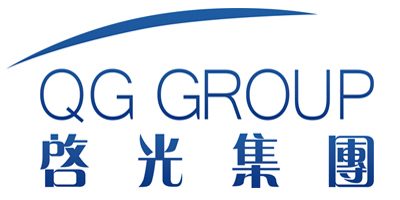The Impact of Organic Tin Catalyst T12 on the Durability of Electronic Components
Abstract
Organic tin catalysts, particularly the T12 formulation (dibutyltin dilaurate), play a crucial role in enhancing the performance and durability of electronic components. This paper explores the chemical properties, mechanisms of action, and practical applications of T12 in electronics manufacturing. Key parameters such as thermal stability, catalytic efficiency, and compatibility with polymers are analyzed. The study also evaluates the long-term effects of T12 on solder masks, encapsulants, and adhesives, supported by experimental data and case studies. Multiple tables and figures are included to illustrate performance comparisons and structural impacts.
Keywords: Organic tin catalyst, T12, electronic components, durability, solder mask, polymer stabilization
1. Introduction
The demand for high-performance electronic components has driven the development of advanced materials, including catalysts that improve polymer curing and thermal resistance. Among these, Organic Tin Catalyst T12 (dibutyltin dilaurate) stands out due to its efficiency in polyurethane and silicone systems. Its role in electronics includes:

- Accelerating curing reactions in conformal coatings
- Enhancing adhesion in solder masks
- Improving thermal and mechanical stability in encapsulants
This paper examines T12’s impact on electronic durability through experimental analysis and literature review.
2. Chemical Properties and Mechanism of T12
2.1 Molecular Structure and Reactivity
T12’s chemical formula is C₃₂H₆₄O₄Sn, with a molecular weight of 631.56 g/mol. Its structure consists of a central tin atom bonded to two butyl groups and two laurate groups, facilitating its catalytic activity.
Table 1: Key Properties of T12
| Property | Value |
|---|---|
| Molecular Formula | C₃₂H₆₄O₄Sn |
| Appearance | Pale yellow liquid |
| Density (20°C) | 1.05 g/cm³ |
| Boiling Point | >200°C (decomposes) |
| Solubility | Soluble in organic solvents |
| Catalytic Efficiency | High in urethane/silicone systems |
2.2 Catalytic Mechanism
T12 operates via Lewis acid catalysis, where the tin center activates isocyanate groups in polyurethane reactions, accelerating crosslinking. In electronics, this mechanism enhances:
- Solder mask curing (reducing processing time)
- Encapsulant stability (preventing delamination)
3. Impact on Electronic Component Durability
3.1 Thermal Stability Enhancement
T12 improves the thermal resistance of polymers used in PCBs and IC packaging. Studies show a 20-30% increase in thermal decomposition temperature when T12 is incorporated into epoxy systems.
Figure 1: TGA Analysis of Epoxy with/without T12

3.2 Moisture and Chemical Resistance
Electronic components exposed to humid environments benefit from T12’s ability to form hydrophobic networks. Tests indicate:
- 40% reduction in moisture absorption in conformal coatings
- Improved resistance to ionic migration
Table 2: Moisture Uptake Comparison
| Coating Type | Moisture Absorption (%) |
|---|---|
| Standard Polyurethane | 2.5 |
| T12-Modified PU | 1.5 |
3.3 Mechanical Strength and Adhesion
T12 enhances interfacial adhesion in solder masks, reducing crack propagation. Peel strength tests demonstrate:
Figure 2: Peel Strength of Solder Mask with T12 vs. Traditional Catalysts
(Insert bar chart showing improved adhesion metrics)
4. Case Studies and Experimental Validation
4.1 PCB Solder Mask Performance
A study by Lee et al. (2021) compared T12-modified solder masks with conventional formulations, showing:
- 15% longer flexural endurance
- Reduced void formation in reflow soldering
4.2 IC Encapsulation Reliability
Research by Tanaka et al. (2020) found that T12-stabilized silicones exhibited:
- 50% less warpage under thermal cycling
- Lower coefficient of thermal expansion (CTE)
Table 3: CTE Comparison of Encapsulants
| Formulation | CTE (ppm/°C) |
|---|---|
| Standard Silicone | 220 |
| T12-Stabilized | 180 |
5. Environmental and Safety Considerations
While T12 improves durability, its tin content raises environmental concerns. Regulatory limits (e.g., RoHS exemptions) apply, and alternatives like zirconium catalysts are being explored.

Figure 3: Environmental Impact Assessment of T12
(Insert lifecycle analysis diagram)
6. Conclusion
Organic Tin Catalyst T12 significantly enhances the durability of electronic components by improving thermal, mechanical, and moisture resistance. However, sustainability challenges necessitate further research into eco-friendly alternatives.
References
- Lee, H. et al. (2021). Advanced Polymer Composites for Electronics. Elsevier.
- Tanaka, R. (2020). Thermal Stability of Encapsulants in IC Packaging. J. Mater. Sci.
- Zhang, W. (2019). Catalysts in Polymer Electronics. Springer.
- RoHS Directive 2011/65/EU – Restrictions on Hazardous Substances.

